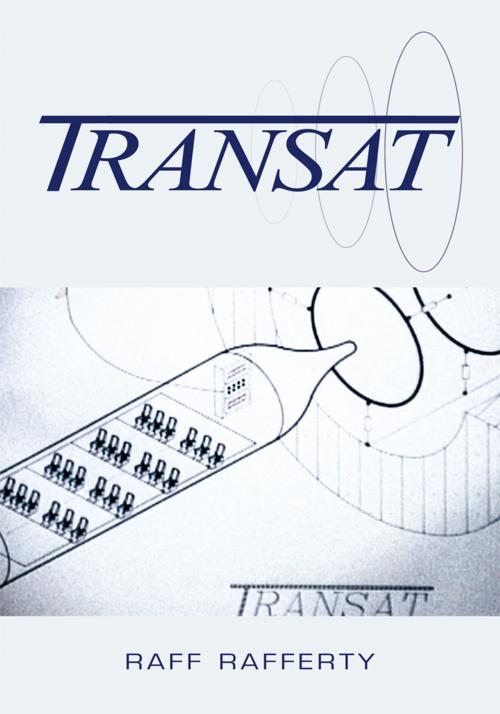| Author: | Raff Rafferty | ISBN: | 9781462804818 |
| Publisher: | Xlibris US | Publication: | July 13, 2004 |
| Imprint: | Xlibris US | Language: | English |
| Author: | Raff Rafferty |
| ISBN: | 9781462804818 |
| Publisher: | Xlibris US |
| Publication: | July 13, 2004 |
| Imprint: | Xlibris US |
| Language: | English |
The Author has developed an interesting, innovative, and well developed mass transportation system that is essentially the ultimate such system. To give the impact of TRANSAT a coast-to-coast trip would take 11 minutes! New York to Boston would take less than three minutes! Significantly as well the technology required does exist today to design, develop, build and operate such a system.
The magnitude of effort required has dictated to the Author that it would require the formation of a dedicated Corporation to achieve the objective. Hence this book encompasses the formation of such a Corporation, and essentially presents it as a proposal to the readers to find their place --- if interested --- and actively pursue the objectives to fruition. The book consists of nine chapters. The first chapter A Ride on TRANSAT is at the moment a science fiction description of a ride on TRANSAT as envisioned by the Author. It provides an inviting introduction to the futuristic and manifold changes introduced by TRANSAT and its system implications for the entire World.
The second chapter TRANSAT Concepts --- The Proposal presents the essentials of the fundamentals of what is a TRANSAT system. It covers how the system works, and how it accomplishes the very high-speed travel. It elucidates many of the concepts required in the TRANSAT Corporation to not only design build and operate the system, but many of the necessary corollary functions required to make the system complete and functional. It touches on many of the inter disciplines that the Corporation must resolve before TRANSAT may be built. It also touches on many options that must be evaluated to determine the optimum one to be accepted.
The third chapter Basic Physics may be seen as the proof of concept section. It deals with the physics, formulas and mathematics required to make the TRANSAT concept successful. It is presented in such a way that full understanding of the formulas is not essential, as the associated text conveys the significant meaning. Deliberate study of the formulas will significantly increase the overall understanding of the presentation however. It will also allow the reader to apply the concept to trips they might be interested in so as to increase individual comprehension of the startling change available. It develops all this through three evolutions of the TRANSAT system as it progresses to the ultimate. This means that what is presented provides the fastest system that humans can effectively use. It is the ultimate optimum mass transport system! It also covers the possible undesirable side effects to such high speeds, and dispels the falsely implied concern that such speeds can produce unusual phenomenon such as flinging into orbit.
The fourth chapter Power Requirements addresses one of the major problems, as there are tremendous electrical demands to fuel TRANSAT. Special problems exist, as the power requirements are electrically dirty and essentially necessitate an independent self-contained system. This is further dictated by the reality that much power will be recovered during part of each trip, power again too dirty to be recycled normally. Also the location of the power demand dictates a self-contained system. The source of this energy is extensively discussed and justified here as well.
The fifth chapter Route Selection provides an extensive discourse on the general layout of TRANSAT routes. It is obvious that considerable study is required in this effort, as essentially it is reorganizing the Worlds routes of commerce. Like any other transportation system, cities and commerce develop along these corridors, as it becomes a dominant factor in their existence. Further here the need for independence with no outside location pressure dictates a new thinking and autonomy relating to these decisions. It also presents a striking example of how extensive governmental influence must be relegated to non-exis
The Author has developed an interesting, innovative, and well developed mass transportation system that is essentially the ultimate such system. To give the impact of TRANSAT a coast-to-coast trip would take 11 minutes! New York to Boston would take less than three minutes! Significantly as well the technology required does exist today to design, develop, build and operate such a system.
The magnitude of effort required has dictated to the Author that it would require the formation of a dedicated Corporation to achieve the objective. Hence this book encompasses the formation of such a Corporation, and essentially presents it as a proposal to the readers to find their place --- if interested --- and actively pursue the objectives to fruition. The book consists of nine chapters. The first chapter A Ride on TRANSAT is at the moment a science fiction description of a ride on TRANSAT as envisioned by the Author. It provides an inviting introduction to the futuristic and manifold changes introduced by TRANSAT and its system implications for the entire World.
The second chapter TRANSAT Concepts --- The Proposal presents the essentials of the fundamentals of what is a TRANSAT system. It covers how the system works, and how it accomplishes the very high-speed travel. It elucidates many of the concepts required in the TRANSAT Corporation to not only design build and operate the system, but many of the necessary corollary functions required to make the system complete and functional. It touches on many of the inter disciplines that the Corporation must resolve before TRANSAT may be built. It also touches on many options that must be evaluated to determine the optimum one to be accepted.
The third chapter Basic Physics may be seen as the proof of concept section. It deals with the physics, formulas and mathematics required to make the TRANSAT concept successful. It is presented in such a way that full understanding of the formulas is not essential, as the associated text conveys the significant meaning. Deliberate study of the formulas will significantly increase the overall understanding of the presentation however. It will also allow the reader to apply the concept to trips they might be interested in so as to increase individual comprehension of the startling change available. It develops all this through three evolutions of the TRANSAT system as it progresses to the ultimate. This means that what is presented provides the fastest system that humans can effectively use. It is the ultimate optimum mass transport system! It also covers the possible undesirable side effects to such high speeds, and dispels the falsely implied concern that such speeds can produce unusual phenomenon such as flinging into orbit.
The fourth chapter Power Requirements addresses one of the major problems, as there are tremendous electrical demands to fuel TRANSAT. Special problems exist, as the power requirements are electrically dirty and essentially necessitate an independent self-contained system. This is further dictated by the reality that much power will be recovered during part of each trip, power again too dirty to be recycled normally. Also the location of the power demand dictates a self-contained system. The source of this energy is extensively discussed and justified here as well.
The fifth chapter Route Selection provides an extensive discourse on the general layout of TRANSAT routes. It is obvious that considerable study is required in this effort, as essentially it is reorganizing the Worlds routes of commerce. Like any other transportation system, cities and commerce develop along these corridors, as it becomes a dominant factor in their existence. Further here the need for independence with no outside location pressure dictates a new thinking and autonomy relating to these decisions. It also presents a striking example of how extensive governmental influence must be relegated to non-exis















